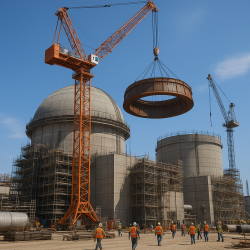Reigniting VC Summer: Why Restarting Nuclear Reactor Construction Is a Game-Changer

I can hardly contain my excitement as I watch the news that construction on the VC Summer 2 and 3 nuclear reactors in South Carolina may finally move forward again. As someone who’s long believed in nuclear power’s promise—both for its climate credentials and its potential to revitalize local economies—this feels like a dream coming true. For over a decade, these massive AP1000 reactors stood half-built, their concrete shells and warehouses of components gathering dust. Now, thanks to renewed interest from global firms and supportive policy winds, we may see that inertia break at last.
Back in 2017, construction on these two units was halted amid a maelstrom of cost overruns and the bankruptcy of Westinghouse, the original prime contractor. More than $9 billion had already been poured into a project that was less than halfway complete, and disillusionment set in across the industry. Fast forward eight years: Santee Cooper, the state-owned utility that owns the site, received 14 responses to its request-for-interest and has shortlisted fewer than five firms to potentially acquire and finish the reactors. These entities will now conduct detailed due diligence and submit final proposals by late 2025 reuters.com.
What makes VC Summer such a compelling candidate for revival is the sheer head start it already enjoys. The reactor pressure vessel and containment buildings are largely in place, and an extensive inventory of critical components sits on-site, ready to be installed. A September 2024 inspection by the South Carolina Nuclear Advisory Council concluded that Unit 2 was approximately 48% complete, with Unit 3 not far behind, and that all major assemblies, instrumentation, and electrical systems remain well preserved in warehouses reuters.com. For someone like me, fascinated by the nuts-and-bolts of large-scale engineering, it’s electrifying to think of these pieces being brought back to life.
Then there’s the broader learning curve that this project benefits from. The AP1000 reactors at Georgia’s Vogtle plant—Units 3 and 4—finally came online in 2023 and 2024 after lengthy delays, providing invaluable lessons in design, regulatory navigation, and construction management. Today, the teams at VC Summer can leverage that hard-earned knowledge to avoid many of the licensing snags and logistical hurdles that plagued earlier efforts reuters.com. It truly feels like we’re witnessing the nuclear industry passing the torch from one complex build to the next.
Policy support has also shifted dramatically in recent months. In May, President Trump issued a series of executive orders aimed at catalyzing a “nuclear renaissance,” including directives to speed up Nuclear Regulatory Commission approvals and targets to break ground on 10 new large reactors by 2030, with an ultimate goal of 400 GW of U.S. nuclear capacity by 2050 reuters.com. That kind of high-level endorsement sends ripples through finance and industry, making investment in these projects far more attractive.
On the economics front, nuclear power has never looked stronger. Electricity prices are on an upward trajectory—projected to climb roughly 7% in 2025 alone—driven by surging demand from data centers, electrification trends, and a need to hedge against volatile fossil fuel markets reuters.com. Long-term power purchase agreements (PPAs), like the 20-year deal Three Mile Island struck with Microsoft, demonstrate how stable nuclear output can underpin both corporate sustainability goals and predictable revenue streams. For VC Summer, securing a similar PPA could cement its financial viability, making it one of the lowest-risk large capital projects out there.
Beyond balance sheets and construction schedules, the human side of this story is what really captures my heart. Reviving VC Summer means thousands of high-skilled jobs for welders, nuclear technicians, and engineers. It means supporting local suppliers and boosting economic activity in rural South Carolina. It means training the next generation of nuclear professionals who will carry clean, reliable power into the future. And it means reducing carbon emissions at a scale that wind and solar alone simply can’t match, especially when it comes to providing baseload electricity for our modern, digital economy.
I get goosebumps imagining cranes hoisting reactor modules into the containment vessels, welders sparking away to seal pressure boundaries, and control room consoles humming with instruments that measure every nuance of reactor physics. The thought that a site once emblematic of nuclear’s setbacks might soon become a beacon of its resurgence fills me with hope—and a touch of nostalgia for those visionary engineers who first broke ground here.
Of course, challenges remain. Finalizing public-private partnerships, navigating state-level approvals, and ensuring continued community support will require skillful collaboration. But the momentum is undeniable. With fewer than five contenders now engaged in due diligence and final bids due by year-end, we’re closer than ever to seeing VC Summer’s dormant turbines turn again.
So here’s to the next chapter of American nuclear power—one where lessons learned are not forgotten, where half-built dreams are given a second chance, and where clean energy advances hand in hand with economic revitalization. I, for one, will be following every crane lift, every licensing milestone, and every contract announcement with the eagerness of a kid watching rockets launch. Because this time, I believe, we’re finally getting it right.